Editor's Note
Chase Valencia is the Co-Owner and General Manager of LASA, a popup restaurant project housed inside Unit 120 in Chinatown of Los Angeles. Be sure to watch their story in The Migrant Kitchen, our newest documentary series in co-production with KCETLink, a national independent public media organization.
Our childhood involved routine visits to see our family in Pampanga, Philippines. Baryo life in the province was a hot, tropical escape from California urban living. Each day was greeted with the syncopated crows of the neighborhood roosters, and the melodic calls of “Taaahhoooo,” bellowed into the air by the local street vendors. What always followed was the clapping of tsinelas smacking the heels of children who craved the warm snack of silken tofu, brown sugar syrup, and tapioca pearl.
In Del Pilar, San Fernando, at my grandparents’ home, our morning breakfasts were of local sweet pork longanisa sausage, torta talong (which is akin to an eggplant omelet), pan-fried bangus (milkfish), endless bowls of garlic-scented rice, and chili-spiced vinegar. On one particular morning, I recall my grandmother asking me, “Have you ever had a tamale before?”
Memories of home in California raced through my head, envisioning the steaming cornhusk-wrapped Mexican delicacy I first tasted at a neighbor’s party. “Of course!” I responded, but she abruptly cut me off before I could continue, calling over one of the local kids to fetch us some tamales. In a heartbeat, the child returned with a steaming wrapped package in what looked like a green banana leaf. I gave my mother a perplexed look, to which she responded with a telepathic death stare that said, “Just eat.”
I got the message loud and clear, and began unwrapping this foreign treat. As I opened the banana leaf, the sweet aroma of coconut milk, rice and annatto engulfed the dining table. Inside, coconut-marinated ground rice served as the base, and in the center were slowly stewed onions and carrots, chicken, chorizo and a sliced hard-boiled egg. The mixture of ingredients looked familiar, but I couldn’t recall ever seeing a “tamale” using this type of preparation.
I took a breath and went in for my first bite. I never felt so much cultural and gastronomic confusion in one morsel. My taste buds couldn’t make sense of it. My palate yearned for the combination of spice, warm masa and succulent chicken—what I thought was a real tamale. Instead, the rich flavors of coconut, onions and carrots coated my mouth. The texture of ground rice was more delicate than the masa I was accustomed to. The chicken marinated in annatto oil, and bits of chorizo tasted foreign. As I took several more bites, I hid my confusion deeper into my belly and I looked at my family with a false joy. “Delicious!” I exclaimed, and reluctantly continued eating.
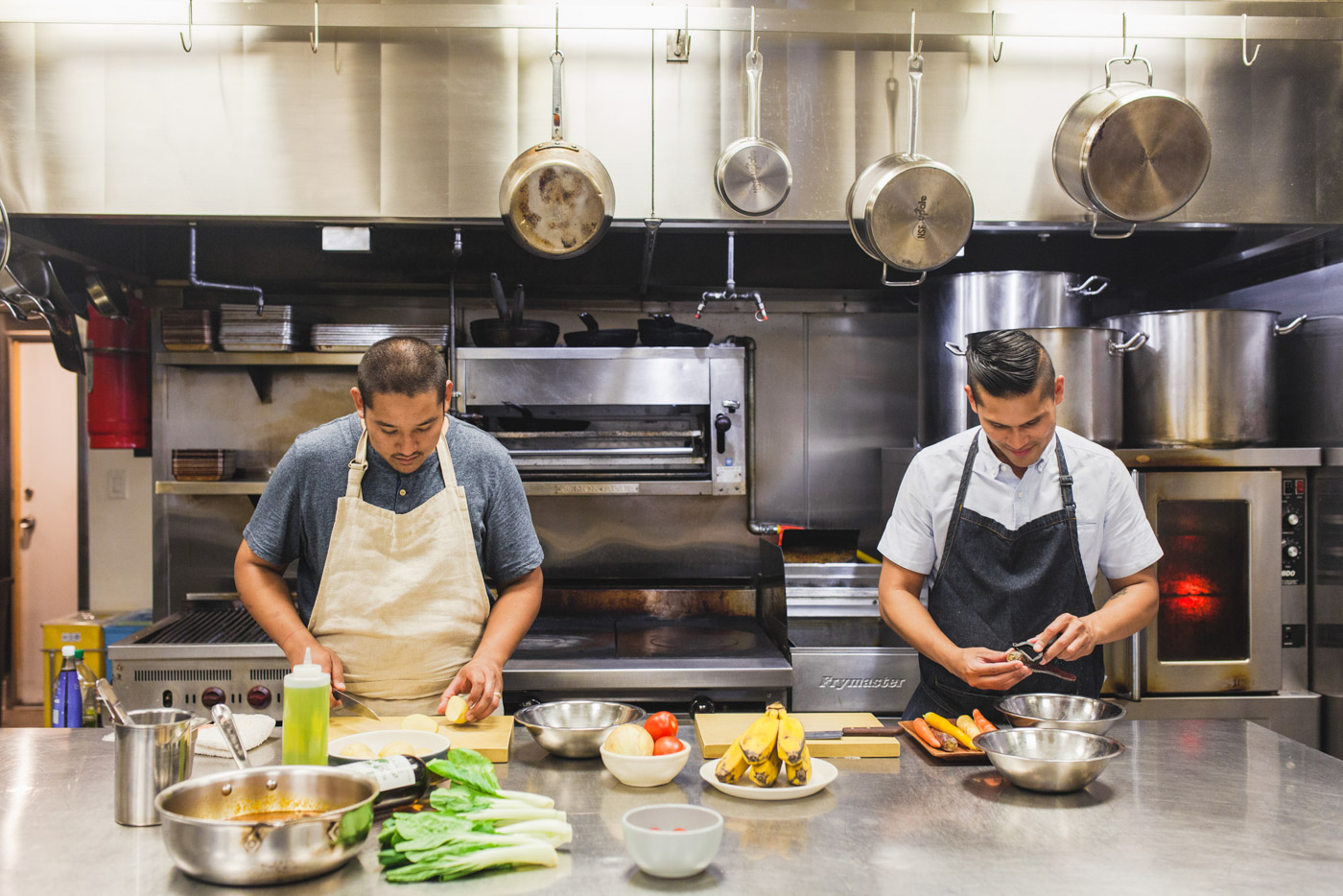
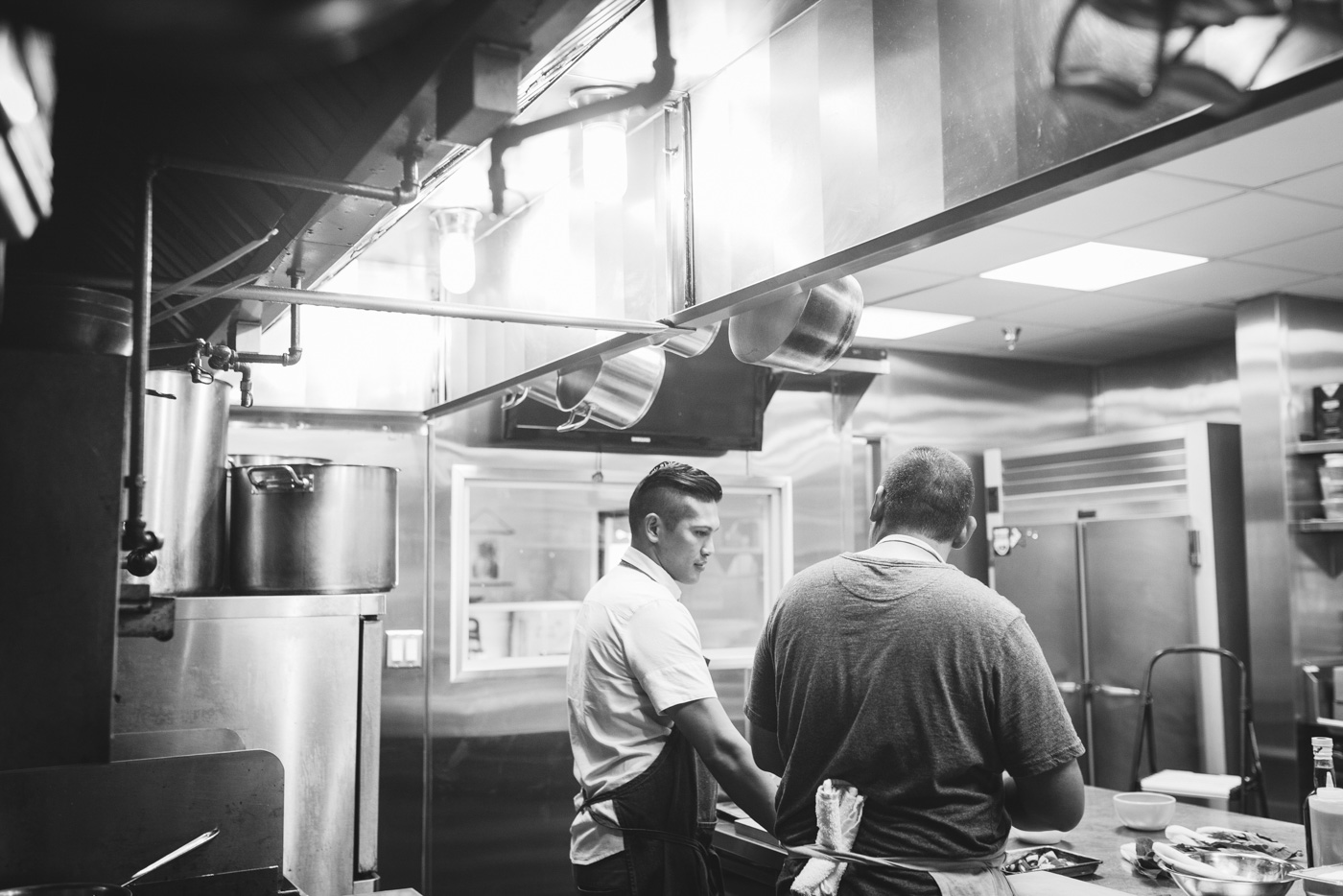
The Filipino and Mexican tamale conundrum was one of many bewildering food experiences I’ve had in life. Researching for LASA, our team sought recipes, memories and experiences like this to learn the foundations of our rich, complex (and sometimes confusing) cuisine. During our developmental process for LASA, we constantly uncover numerous cross-cultural flavors and preparation techniques found in dishes from the Philippines. Those culinary connections of various dishes in Filipino cuisine can be found across different continents and oceans.
From a gastronomic perspective, throughout its history, the Philippines acted as a large stop for cultural food exchange. The Manila galleons of the Spanish Colonial era brought ingredients like chayote, avocado and papaya along with culinary ideas like the Mexican tamale to our shores, ultimately integrating these overseas food customs into our cooking. Over time, we replaced ingredients of the tamale with what was abundant in our native soil to make it our own. Filipino cuisine evolved by the intermixing of food brought along by traders, merchants, travelers and colonizers who passed through the island chain over the centuries. It is a melting pot and cross-cultural mash-up of Indonesian/Malaysian, Chinese, Spanish/Mexican and American food culture incorporated into local food traditions. Although centuries have passed, outside influence remains in our cuisine, ultimately adding depths of flavors and techniques unique to our culinary story.
Prior to the arrival of the Spanish in the 16th century, the 7,641-island nation was never ruled by one homogenous group of people or culture to establish a society with shared foods, customs and traditions. Instead, several tribes, maritime states and kingdoms such as the Tondo Kingdom of Luzon, Rajahnates of Cebu, and Islamic Sultans of Mindanao ruled independently from each other carving out their own territories in the region. Maritime Southeast Asia was based on customs of sea faring, trade, cultural exchange and migration. During this time, culinary practices in the region began to become established. Remnants of these food exchanges can still be seen today.
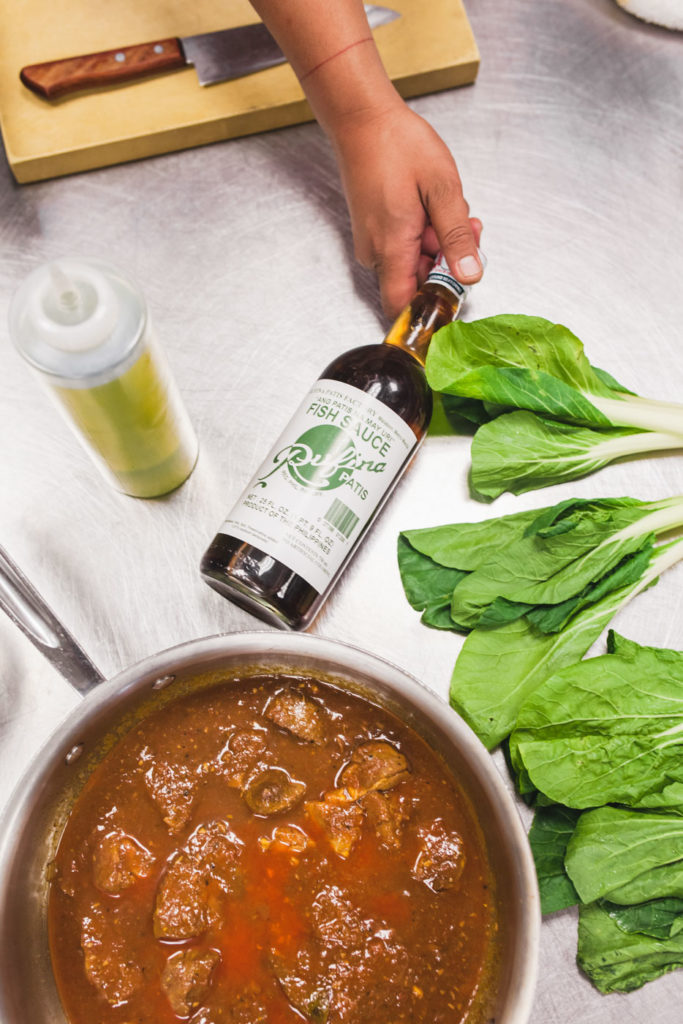
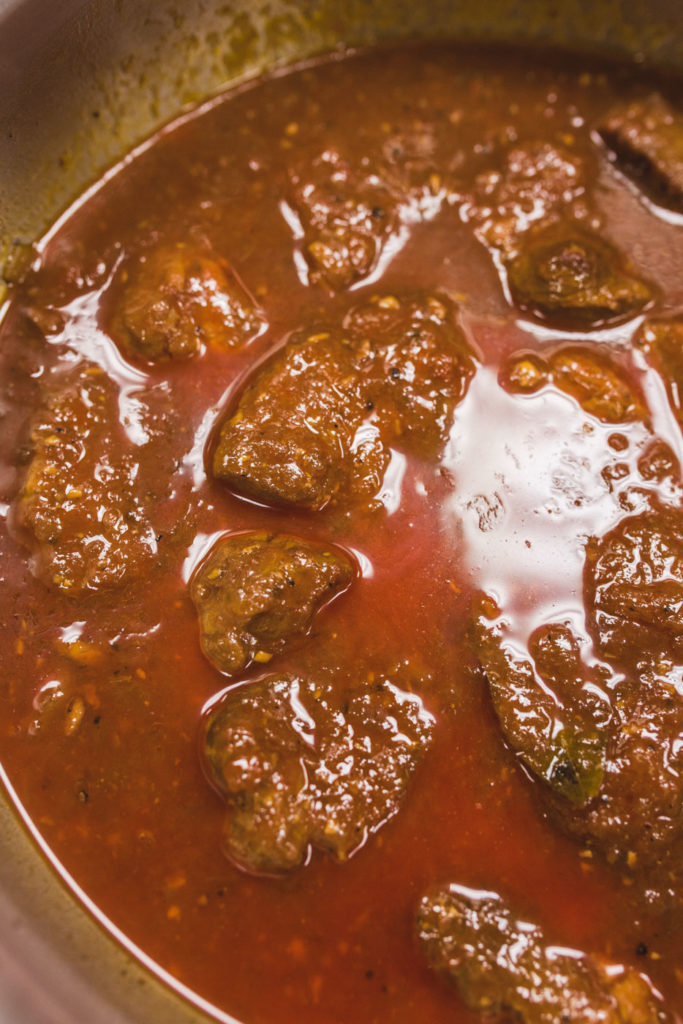
Indo-Malay Impact
A Filipino daily food custom, merienda, is a small mid-day snack or meal before dinner. Often you will find Filipinos having coffee and snacking on a warm savory empanada pastry or a pork bun siopao. Some seek something sweeter like my personal favorite snack, puto bumbong. This rice cake is made out of glutinous rice that is often a dark purple color due to the local black rice and ube (purple yam) in the dessert mixture. The rice is first ground, soaked and dried. It is then shaped and placed in a bamboo tube to be steamed. Coconut oil is used to coat the steaming bamboo vessel so the rice cake can be easily shaken out of the tube and still retain its cylinder shape. Once out of the bamboo tube, the puto bumbong is topped with muscovado sugar and freshly grated coconut. The result is a warm, soft and chewy textured treat. The coconut and molasses flavored toppings are a perfect complement to the bamboo-steamed rice dish.
Growing up, my Spanish-speaking friends would always chuckle that a certain Spanish derogatory term “puto” is the name of a Filipino dessert, which led people to believe this island confection is Mexican or Spanish in origin. However, it can actually be traced back to South India with a breakfast dish called puttu, prepared in similar fashion as another steamed rice and coconut based dish with a notable cylinder shape. Ancient ties through trade from India and major waves of migration from Indonesia and Malaysia to the islands occurred between the 3rd through 15th centuries. Culture from these regions set the foundation of food, language and religion in the area. Dishes like puttu were easily absorbed into the food customs of that era. Ancestral relationships with our Southeast Asian neighbors then naturally set the culinary framework of the islands.
The southern region of the Philippines—Mindanao, Samal and the Sulu archipelago—was the entry point of the Indo-Malay ancestors. Spicy coconut milk stews such as rendang, curry manok iban talum and ginataang manok epitomize the Indo-Malay infusion of coconut milk, turmeric, ginger, garlic, lemongrass and chilies into the cooking of this region. There is little variation from the recipes passed down throughout the centuries, untouched by the influence of the Chinese, Spanish or Americans, which are more obvious in the culinary culture of the rest of the Philippines.
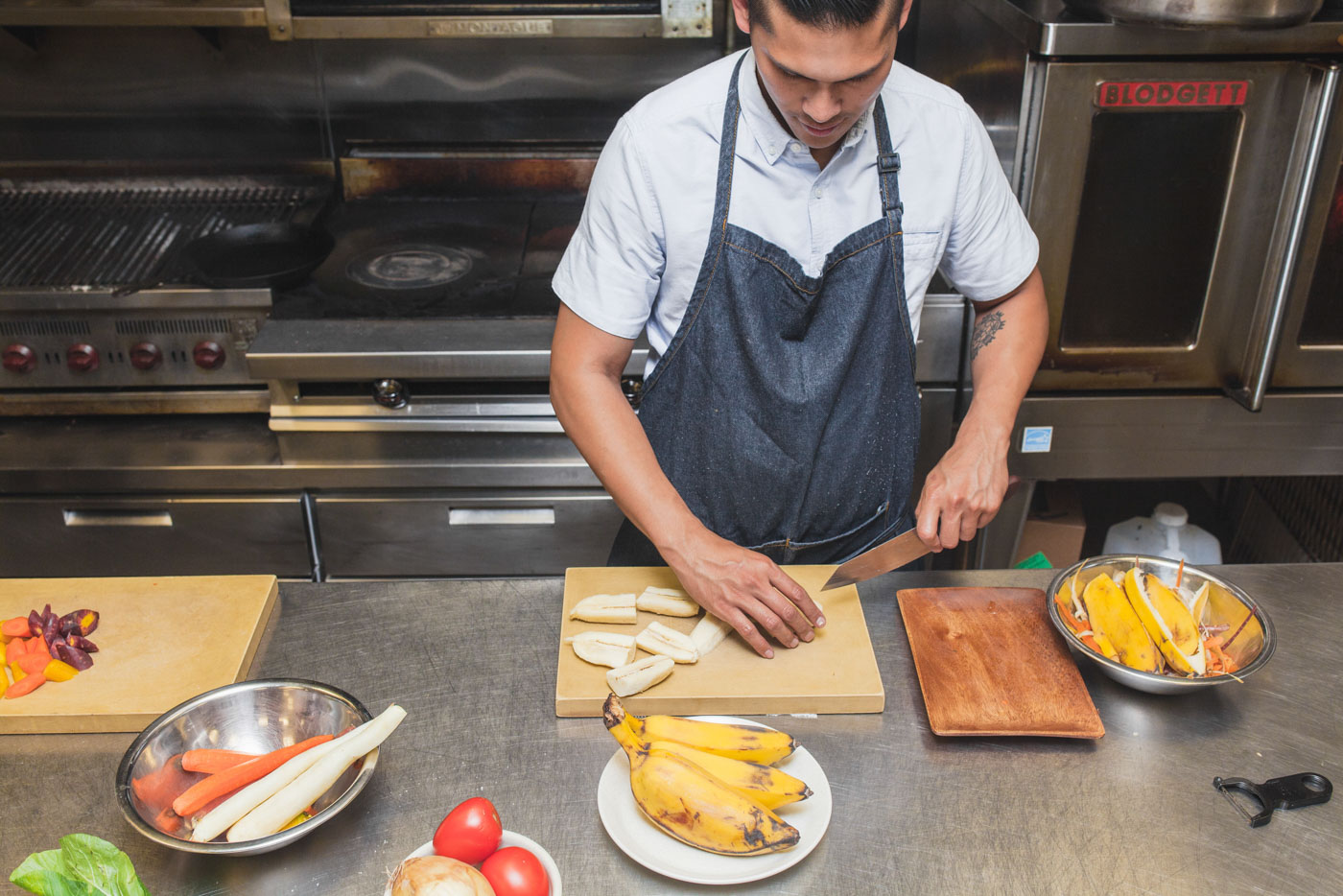
Chinese Impact
If you ventured into a traditional Filipino family party, you will always find drunken karaoke, countless relatives, and an excessive spread of food. In that spread, there will always be pancit: the noodle dish and most recognized culinary legacy left behind by the Chinese. In most Filipino households, there is a custom that you eat noodles for your birthday in hopes for long life. Pancit in Hokkein roughly translates to, “something that is conveniently cooked.” Slow cooked meals over an open fire have been integral to the island dwellers, but with the 12th century Chinese merchants’ introduction of the quick stir-frying technique of cooking noodles, protein, local vegetables and seasonings dramatically advanced the way locals cooked food. Until then, food preparation on the archipelago was based around the cooking applications of broiling, roasting, steaming and preservation. Stir-frying was an adopted technique that enhanced locals with a different way that ingredients, flavors and textures could be combined. There are perhaps hundreds of pancit varieties, based on provinces and sometimes even towns or neighborhoods.
Pancit palabok is a succulent shrimp and pork based noodle dish found throughout the country. Elements of indigenous Chinese and Spanish cooking and ingredients make up the recipe. Shrimp, annatto oil, patis, garlic, celery, onions and carrots are slowly cooked together to make the sauce. Sautéed ground pork and more shrimp are then tossed into the medley. Chopped green onion, flakes of tinapa (smoked fish), and chicharron shavings are spread atop the saturated noodles. Sliced Philippine citrus, calamansi, is added to provide a smack of acidity. The thin rice noodles mop every bit of the orange-hued sauce. Each savory component is tangled into varying combinations of crunch, smokiness and funkiness in each bite. Palabok is distinctly Filipino: layered, deep, dense and deliciously excessive.
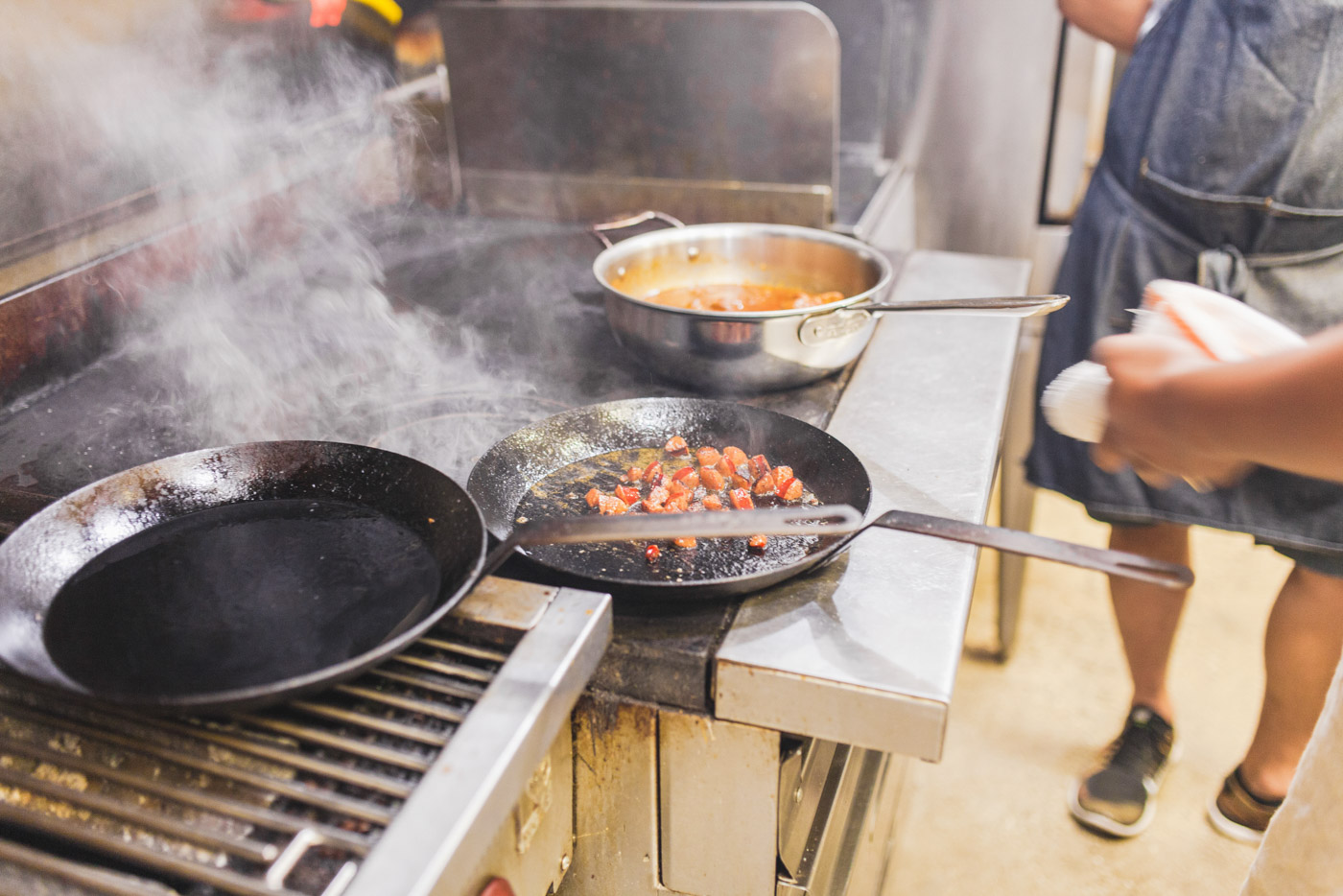
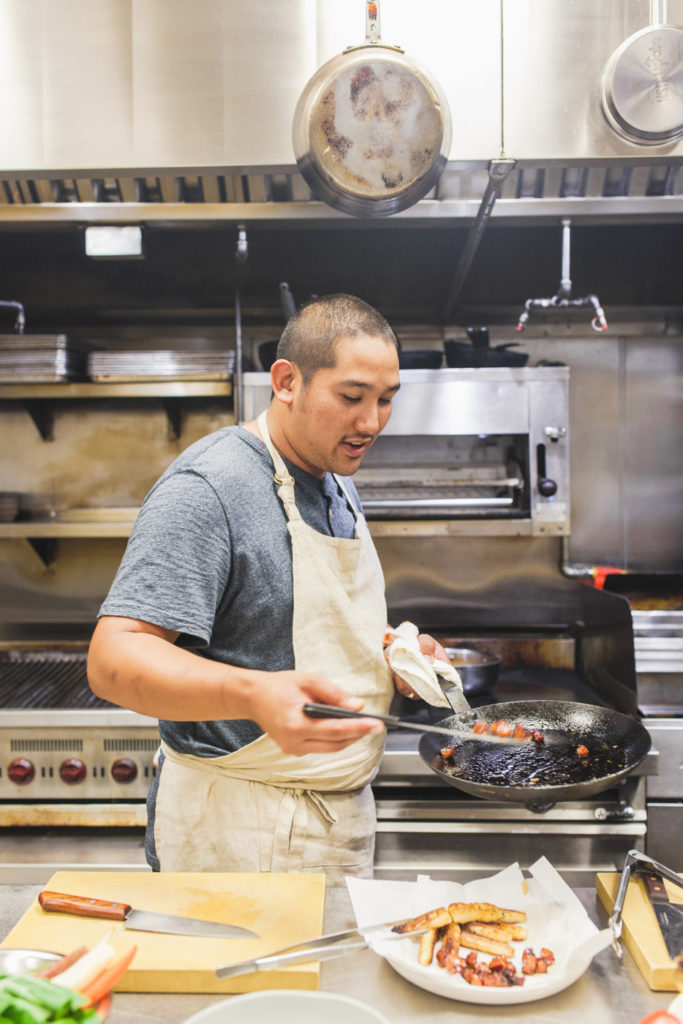
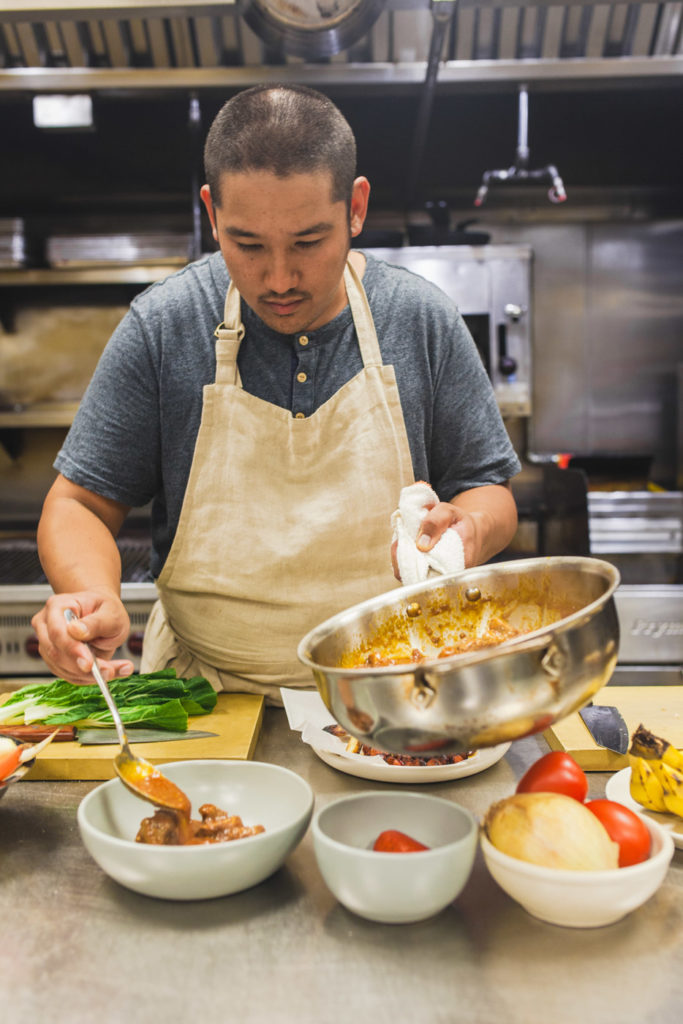
Spanish Influence
During the colonial era, Spanish dishes were mainly prepared for the elite and for special occasions of the common Filipino. Mainly holidays and town fiestas were the only times when embutido, arroz valenciana or stews such as afritada and menudo made their way onto the dinner table. Nowadays, these dishes have been integrated into everyday cooking in Filipino households.
One of my favorite recipes—which my mother taught me to cook—is the soul-warming stew, pochero. The Spaniards introduced this slow-cooked, hearty cocido, along with many other Filipino dishes, during their 300 years of colonial rule of the archipelago. The one-pot, low and slow method has already been an essential way of cooking in the region, thus the Spanish cocidos was a culinary language the islanders easily translated and ultimately adapted into their own.
Pochero is essentially a rustic stew with comfort food qualities. The dish has a flavor base of sautéed garlic, onions and tomatoes. The Iberian-derived stew is prepared with a choice of meat, chorizo, carrots and potatoes. Filipinos incorporated their local hearty greens like pechay into the pot. To counterbalance the umami-laden flavors of the meat-based stew, pan-fried saba bananas are added to finish the dish. The local cooking banana cleverly provides a delicious play of savory and sweet in the cocido.
According to my mother, the most important step when preparing pochero was always the gisado (derived from the Spanish word guisado), which is to sauté garlic until golden brown and onions become translucent with olive oil, then add diced tomatoes to the medley until the ingredients marry into a savory, aromatic, sweet and slightly acidic harmony. This garlic, onion and tomato trifecta is the primary base for most of the dishes in Filipino cooking. This application is used for basic breakfasts such as torta, which is essentially an omelet filled with gisa ground beef to the more elaborate recipes, like the tediously prepared fiesta dish bangus rellono. Milkfish is cleaned, and then the meat of the fish is mixed with gisa ground beef, bell peppers, raisins, patis and other local seasonings and aromatics. When the mixture is ready, the blend is carefully stuffed back into the skin before being sliced and served. The Spanish-derived gisado technique provides a layer of flavor to Filipino cuisine that differs from our Southeast Asian counterparts in which coconut milk, curry and spices dominate our neighbors’ flavor profile.
Spanish recipes have not only been inherited but also adapted and changed to become something completely different. Take the case of ensaymada (by way of Mallorca), which evolved from a simple flour-based pastry with powdered sugar into a sweet-savory brioche type bun topped off with a sharp cheese, sugar and butter in the Philippines. The transculturation process of Spanish food in the Philippines shaped the identity of Filipino cuisine.
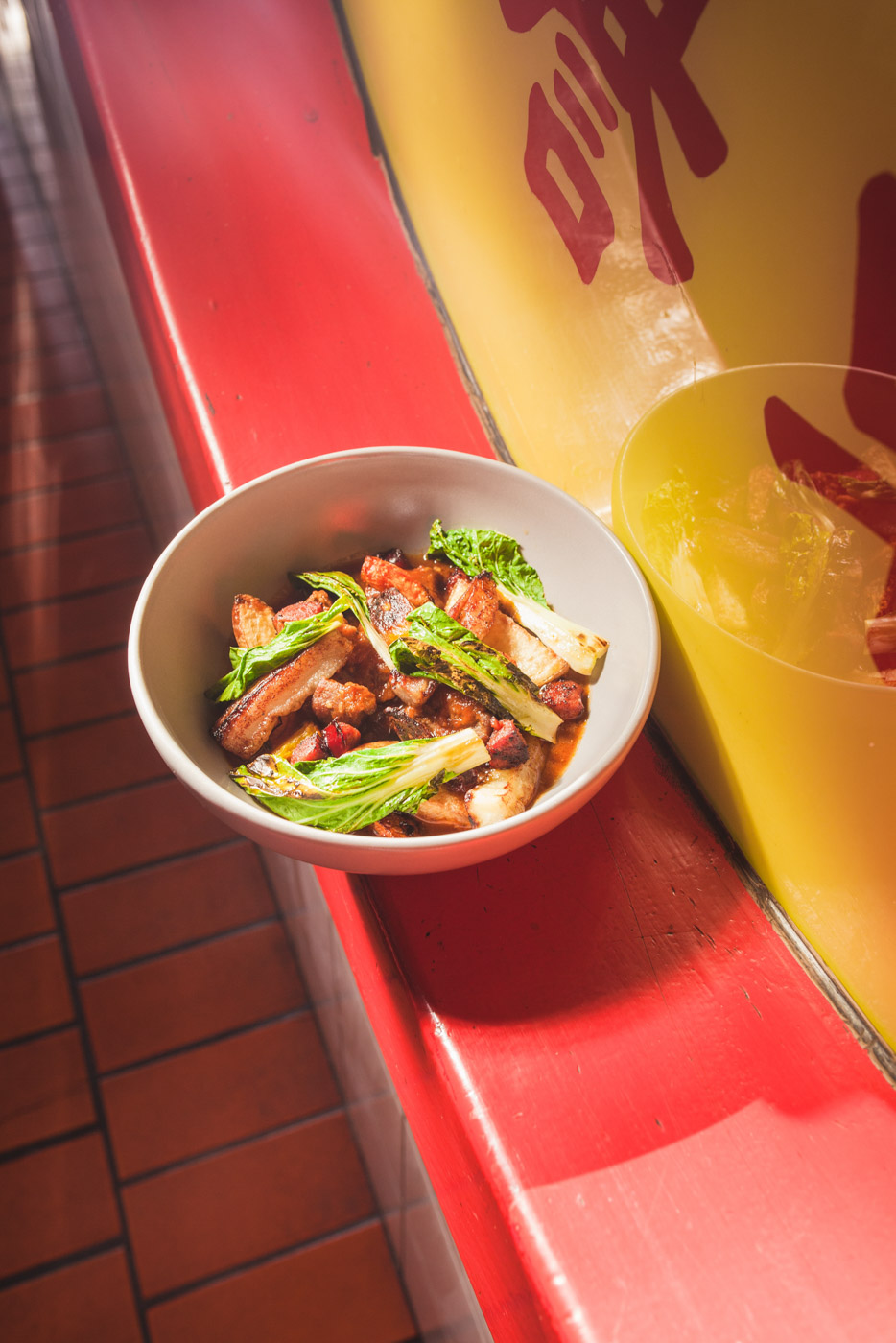
American Impact
The American influence on Filipino cuisine most famously brought the ideas of convenience in food preparation such as canned foods, pre-packaged foods and fast food. Spam was first introduced to the Philippines during World War II and has been a staple in Filipino breakfasts ever since. Growing up, on Sunday mornings my mom prepared us spamsilog (spam, fried eggs and garlic rice). I still love this combination, and to really complete my meal only one condiment is needed: banana ketchup.
This sweet and tasty topping to a Filipino breakfast has origins in a tomato shortage in the country during World War II. With bananas in abundance throughout the tropical island, the sweet fruit appeared to be a good alternative to tomatoes for the locals. Smashed bananas were mixed with spices, vinegar, brown sugar and red food coloring (to get the ketchup red hue). The result is a deliciously sweet condiment, which can be found in every Filipino pantry.
From the impact of ancient trade relations with India to the occupation of the United States, the culinary history of the Philippines is dense and textured thanks to the myriad of influences accepted into our culture. The basis of most of our dishes came from a foreign source, but we adapted and improvised with our local ingredients and native tastes. We developed dishes so deeply ingrained in our way of eating that the origin of the dish became an afterthought. The end result is naturally absorbed into what is today’s Filipino cuisine.
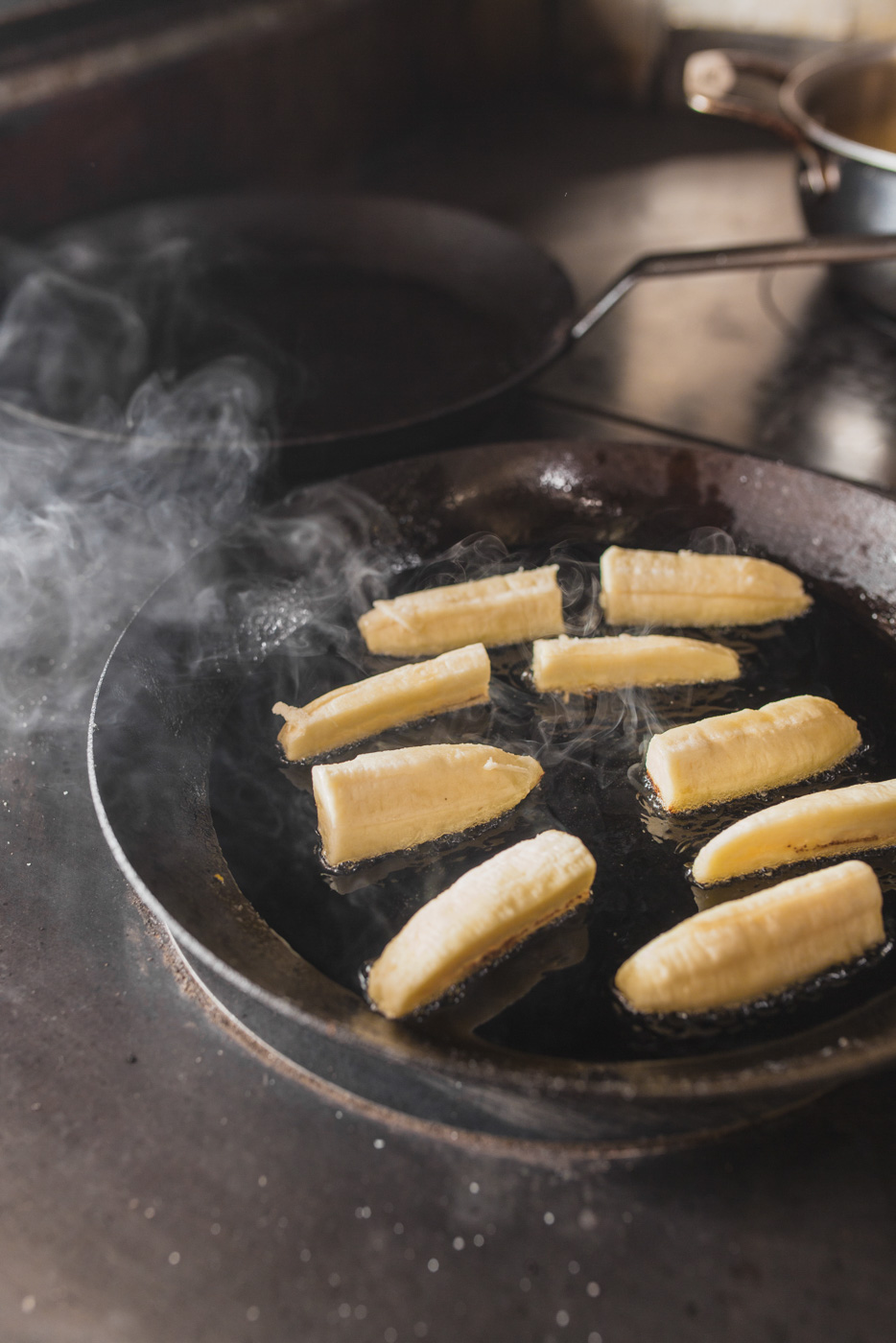
——
LASA (at Unit 120)
727 N Broadway #120, Los Angeles, CA 90012

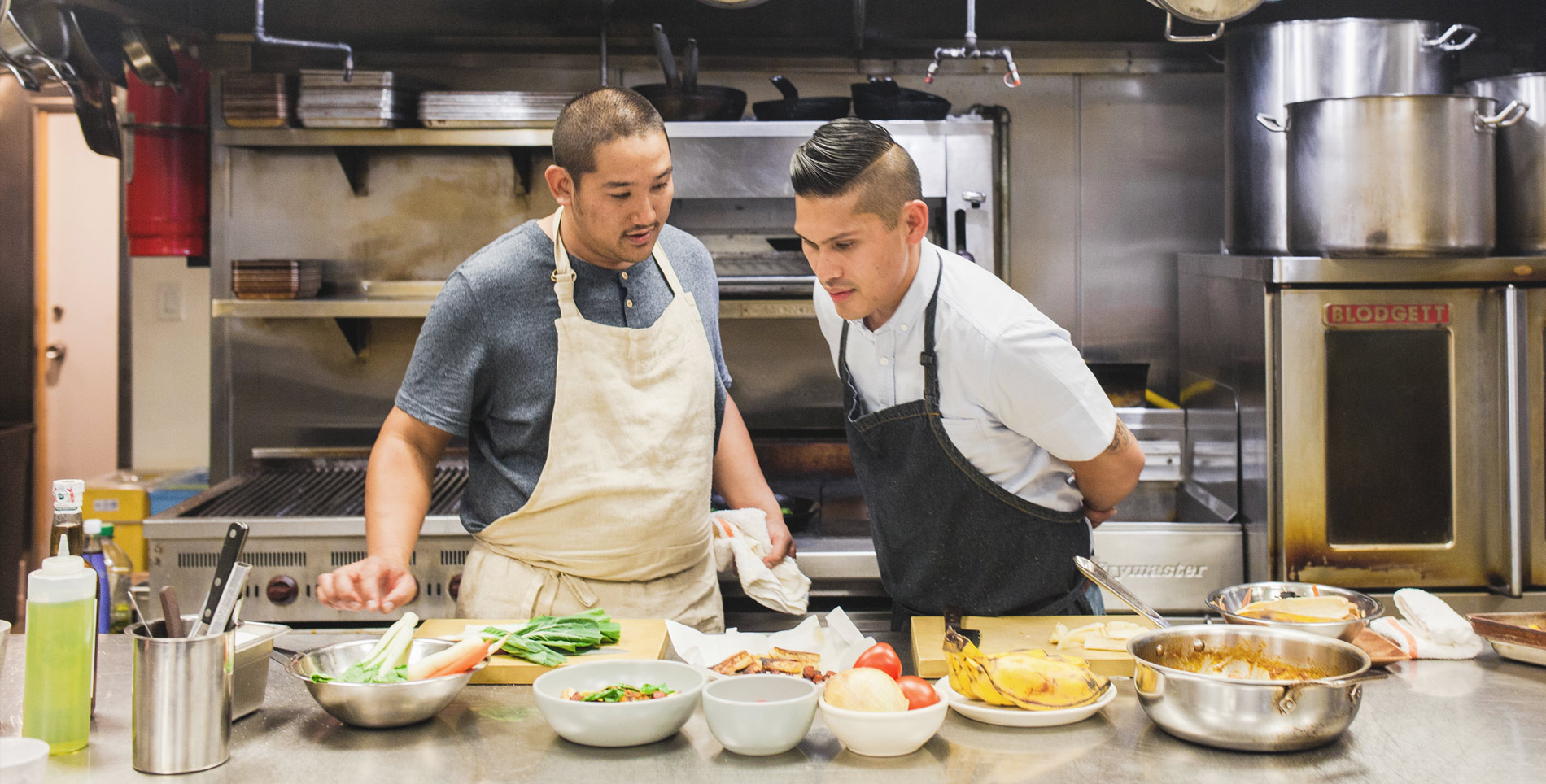

Our comments section is for members only.
Join today to gain exclusive access.